The Coolest Thing about Farming + Harvest Peanut Tour
- October 23, 2017
- Last Updated: May 1, 2025
- 17 Comments
- Nutrition
Hey friends,
Hope you all had a nice weekend! If you’re doing any meal prep tonight, did you see these Vegetarian Stuffed Spaghetti Squash Boats from yesterday?
They are SUPER delicious and what I’m craving like every day. They are also full of prebiotics and probiotics, so great for digestion and gut health.
Peanut Harvest Tour
Today, I’m finally recapping my Peanut Harvest Tour from a few weeks ago! It took place in Camilla, Georgia and was sponsored by the National Peanut Board.
Upon arriving in Tallahassee, Florida, I hopped in the shuttle bus and headed to Georgia. We had a nice meet and greet the first night at the club house so I cleaned up a bit before dinner.
We met all the other guests and introduced ourselves.
There were a variety of professionals there – other dietitians, people working for the National Peanut Board, a pediatrician, consultants and people in the food service industry.
I sat next to Robyn for dinner and just chatted about career stuff and life. I feel like I’ve known her for years through emails, reading her blog, but we hadn’t met until this trip.
After dinner, we headed back to our cottages to call it a night.

Day 2: Where Are Peanuts Grown?
Tuesday was a full day and a very educational one at that! We got to meet a few peanut farmers and learn all about the process of growing and harvesting peanuts.

Did you know that peanuts are the most sustainable nut among all nuts? About 4.6 gallons of water are needed to produce one ounce of peanuts.
When you compare that to other nuts, like almonds for example, they require 80 gallons of water to produce one ounce!
While I’ve never considered these statistics before, they are important for our environment and water conservation efforts.
Also, most people don’t realize peanuts are grown in the ground, not in trees. Hence, people who are allergic to tree nuts (like me), don’t necessarily have an allergy to peanuts and vice versa.
Peanuts actually grow into the ground.
They start above ground and grow into the soil. Peanuts also make their own nitrogen and fertilizer, so farmers don’t need to apply any. Peanuts have the smallest carbon footprint of any nut.
Isn’t that crazy cool?!

Details About Picking and Harvesting Peanuts
Did you know Georgia is the top peanut producer in the US? I did not until this trip. Another thing I never considered was the time of day of harvest.
The time you harvest peanuts is vital. You don’t harvest in the morning because the roots and shells are too tough and they are more likely to crack.
If the peanuts crack, they can still be used for peanut oils and such. However, in these instances, cost value goes down by nearly 2/3, so it’s not efficient for farmers to pick them then and lose money.
The afternoon hours are the best time to pick peanuts.
Planting peanuts occurs between late April and June, and the harvest season is going on now. Peanuts need about 135-145 days to grow.

Soil temperature and hydration is also so important. We learned about some of the great technological advancements that have helped improve peanut production.
If the region doesn’t get enough rain, farmers have to use irrigation systems.
They can personalize how much water they give to different zones on the farm due to these advanced irrigation systems.
So, one acre of peanuts may be much drier and gets more water versus another acre on the farm.

After leaving the farm, peanuts go to a local milling point where they are milled and graded for quality.
Peanuts need to meet minimum size requirements, and they look for dirt, rocks, sticks, cracks and any signs of aflatoxin in the peanuts that are picked.
I didn’t realize how intricate and detailed this whole process is.
The Farmers Growing and Harvesting Peanuts
We got to meet Casey Cox, a 6th generation peanut farmer. She is also one of few women farmers. I have so much respect for her for defying the odds, and taking on all of this responsibility.
Her father, Glen (5th generation) is still involved in the farming aspect, but will retire soon. I love that about farmers – most of them are family owned and multi-generational.
Most people think farms are all big agricultural giants in it for the money. In reality, 97% of farms are family owned.
Farmers are such cool people. Most consumers have no idea the time, money, sweat and grit that goes into farming. And most of the farmers I’ve met and spoken to still remain so passionate about their work.
The hard part is what doesn’t get translated to the public, which is where we, as dietitians, have a big role in translating the science and facts.
Alot of this revolves around organic vs. conventional farming and pesticides.
Many small family owned farms don’t have the funds to do all organic farming. But, that’s not to say they are applying pesticides and chemicals right and left.
Many of them have housing close to the farm, so they would actually be harming themselves by using excess chemicals. They have pesticides that only target weeds or herbs, and everything can be very specific.
Farmers have to know so much information and take courses on all of this, so they are very educated.

After our tours, we were served a very southern afternoon lunch. I ate corn, bread pudding, peach cobbler, and the best grilled peanut butter sandwich I’ve ever had, washed down with sweet tea.
The secret was a berry they mixed in that is grown in Georgia that had a similar consistency to honey.
After lunch, we took a peaceful pontoon boat tour on the Flint River, before heading to White Oak Pastures for dinner.
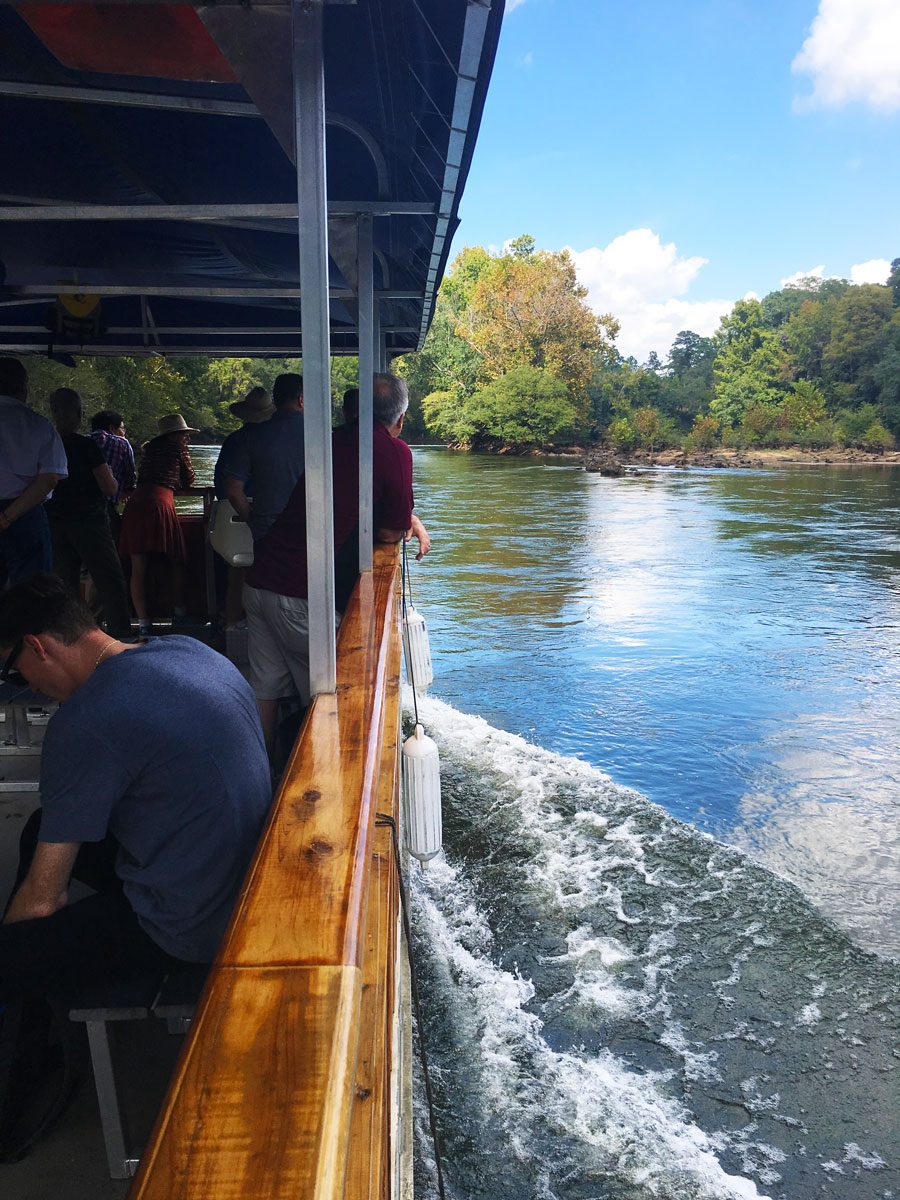
White Oak Pastures & Chef Virginia Willis
We stopped at White Oak Pastures for our final tour and for dinner. William Harris, the owner, has been published in many publications, including the NY Times, such because of his dedication towards raise grass-fed, humanely raised beef.
We ate dinner in the most beautiful room with the most beautiful table decorations. It reminded me of a beautiful rehearsal dinner set up.
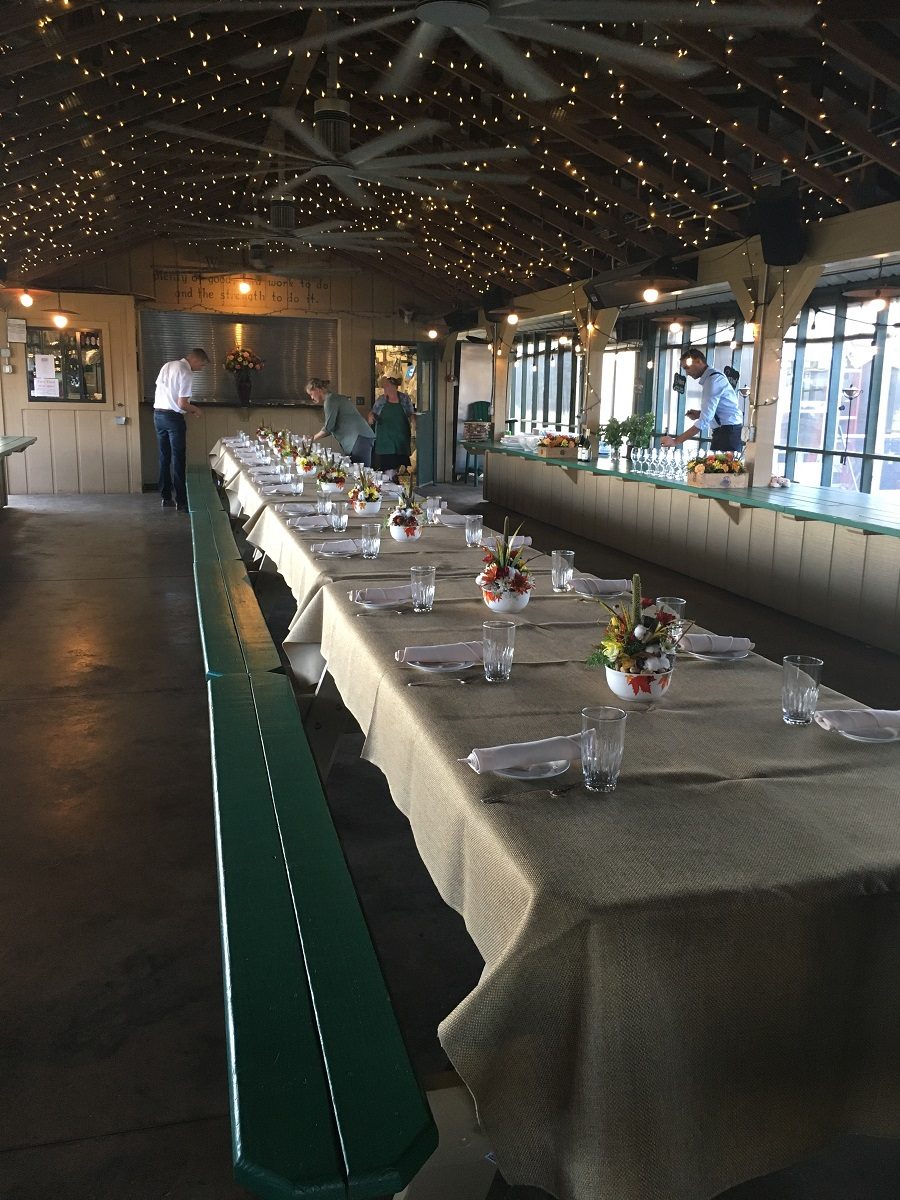

Chef Virginia Willis, a James Beard award winner and cookbook author, cooked for us and everything was so delicious. They had a fun cocktail hour where we mingled with lots of tasty appetizers.
Everything had peanut included in some way or another. Fried chicken wings with peanut butter powder, a peanut butter beef slider, and fresh veggie crudité with peanut oil bagna cauda.
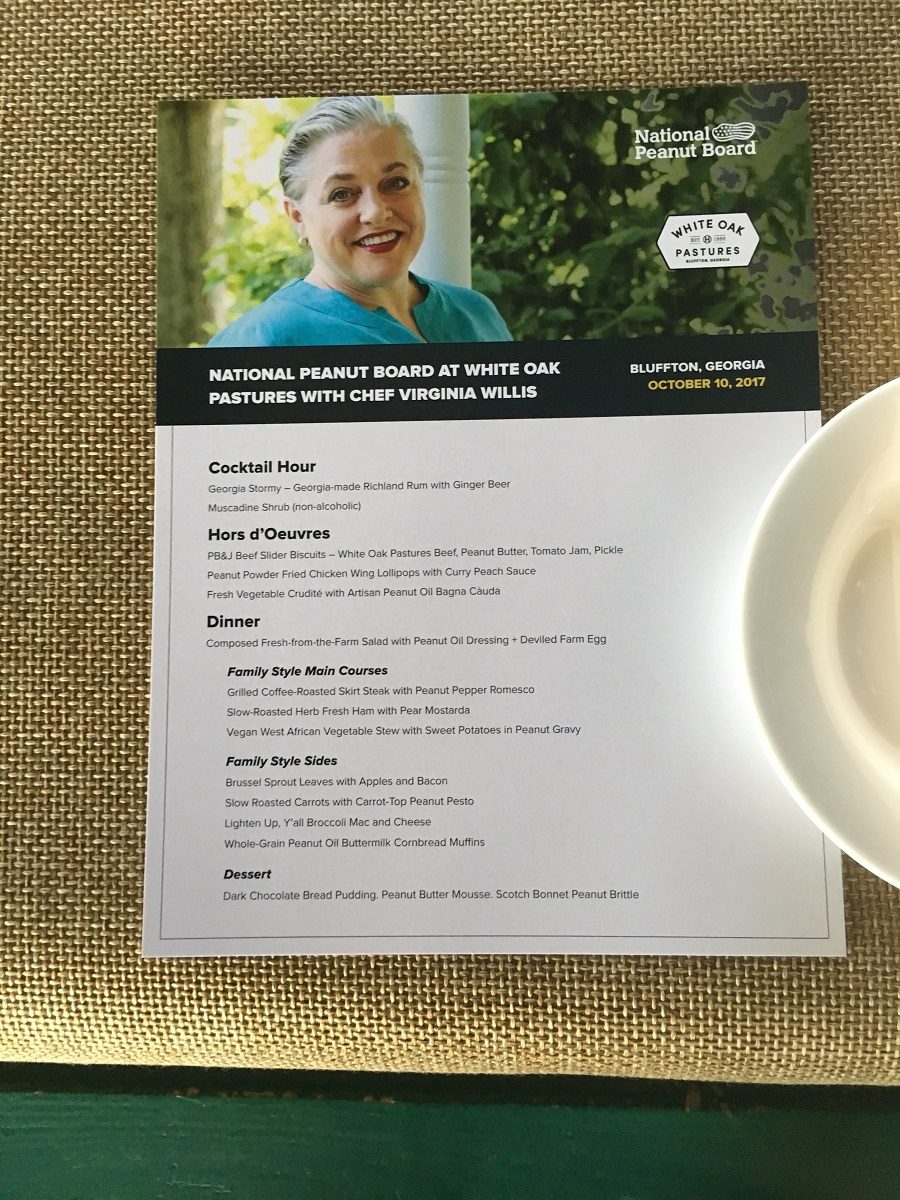
It was a family style dinner, full of good food. I didn’t take many pictures because I was too busy enjoying the company, but I definitely left feeling overfull.
It’s okay to overeat at certain social situations because you’re enjoying the whole experience, and that’s definitely how I felt upon leaving.
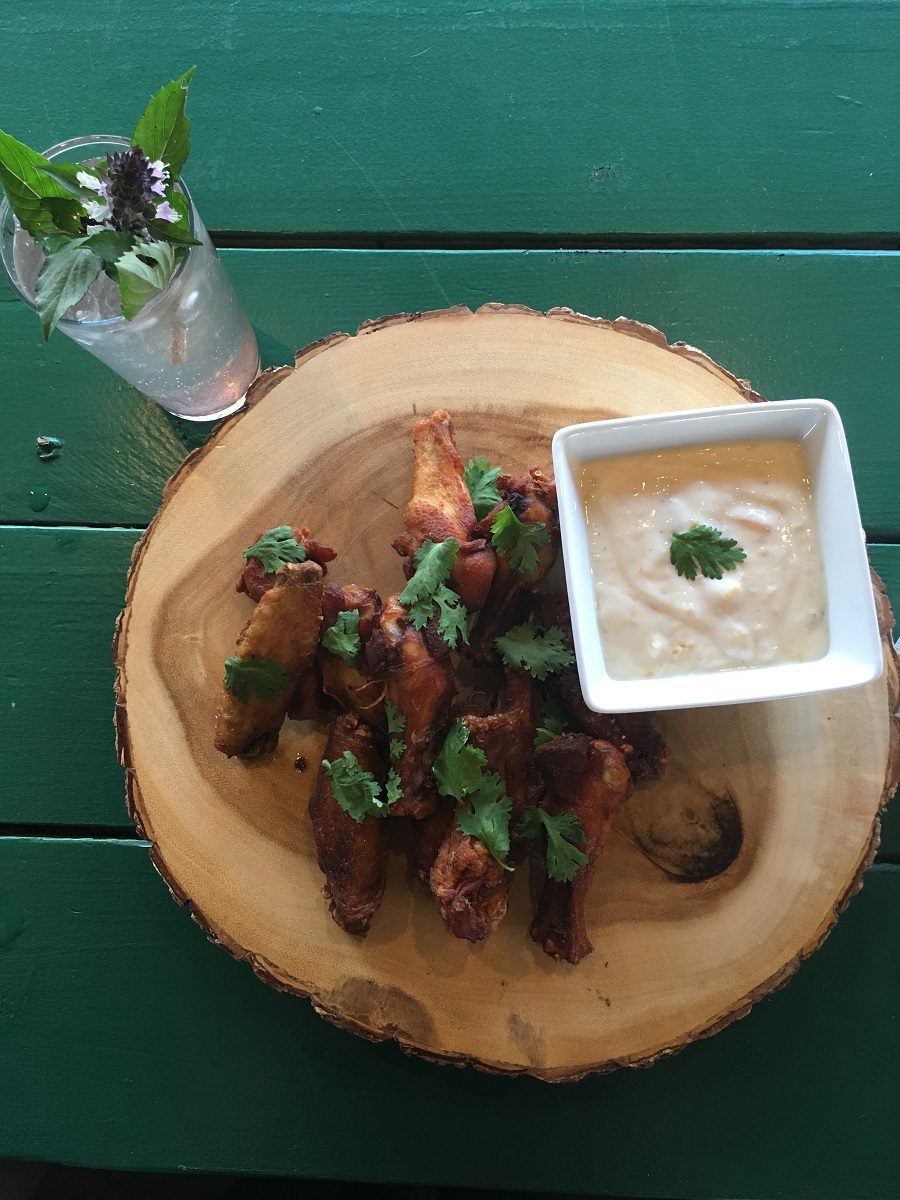
After an action packed day, we were ready for an early bedtime. We had breakfast early the next morning before heading to the airport to fly home. It was a short and sweet trip!
Have you ever toured a farm?
Favorite nut?
Disclosure: This was part of a sponsored trip hosted by the National Peanut Board. The National Peanut Board covered all of my expenses. I was not compensated for my time. All opinions are my own.
Support Bucket List Tummy




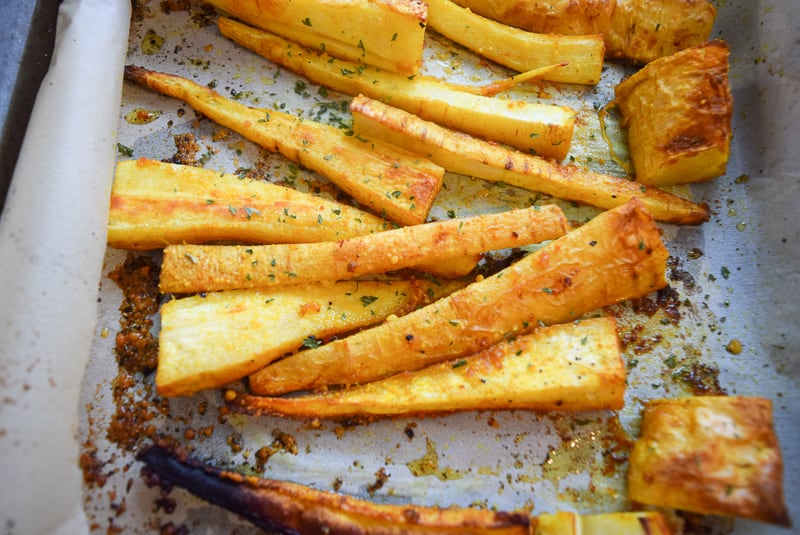


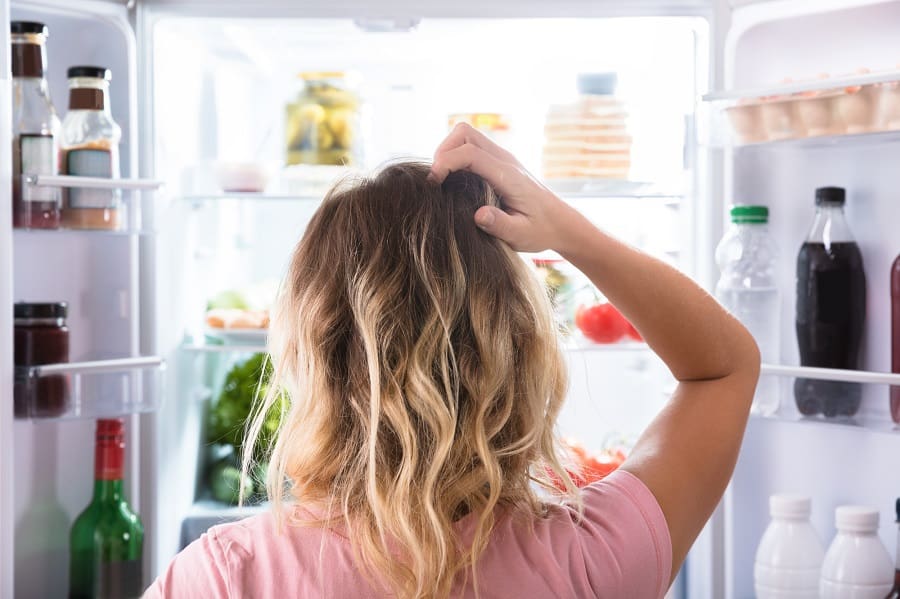
Like This Content?
Support Bucket List TummyI’m totally jealous!!! I grew up in ATL, and went to college in Tallahassee for a couple of year. Also, I love peanut flour.
Fun fact: I played softball with Virginia’s girlfriend (now ex) and we used to all go eat Mexican together. I wish I’d demanded she cook for us instead! That was way before her cookbook writing days though.
I’m totally jealous!!! I grew up in ATL, and went to college in Tallahassee for a couple of year. Also, I love peanut flour.
Fun fact: I played softball with Virgina’s girlfriend (now ex) and we used to all go eat Mexican together. I wish I’d demanded she cook for us instead! That was way before her cookbook writing days though.
What a small world! You definitely should have had her cook for you, haha
If I visited a peanut farm, I’d never leave hahaha
Favorite nut would be a walnut, but peanut butter tops all 🙂
LOL – good point
What an awesome experience!! I have never really thought about how peanuts grow – but in the ground probably wouldn’t have been my first guess – even though I know they’re legumes!
Most people don’t think that either!
Now that would be my kind of farm tour! Given peanut butter is a major staple in my diet, I have all the eager farmers out there to thank for it. I’d have never guessed most farms are family-owned [awesome!] and about the sustainability of peanuts versus other nuts. Yet more reasons to stick to it as my main nut butter. I’d heard about almonds not being the most amazing here but this was still news to me. Actually, I hope your post and those by the other bloggers attending will reach a broad audience because as health nuts we should care about the environment, too.
Yes, lots of good news for peanuts! Definitely agree to your last point about caring about the environment – sustainability affects us all in one way or another, good to be educated.
What a cool experience! I had no idea how peanuts grew. Who’s would have thought the time of day mattered for harvesting. Farming is super interesting. I toured a carrot and neighboring dairy farm a few years ago and it was really interesting to learn how it worked.
Down to the most minute details, crazy! I would love to see a dairy farm someday.
This is so cool. I had no idea how peanuts are harvested! I’ve never toured a farm but it looks like a lot of fun. My favorite nuts are almonds 😛
I’d recommend doing a tour if you ever have the chance, so educational!
Wow wow wow this has been SO interesting. I definitely did not know anything about peanut production – and that they grow INTO the ground!? How cool!
Farmers are wonderful and amazing. Thank you for shedding light on this. “The hard part is what doesn’t get translated to the public, which is where we, as dietitians, have a big role in translating the science and facts…..Many small family owned farms don’t have the funds to do all organic farming. But, that’s not to say they are applying pesticides and chemicals right and left. Many of them have housing close to the farm, so they would actually be harming themselves by using excess chemicals. ” —-> yes yes yes. You guys as dieticians etc play an important role in helping the rest of us, as society, learn the truths and not just give into stereotypes and myths. A lot of farming practices can be unthetical, yes, but a lot is very honorable. And farmers work SO hard. Thanks for this Sarah!
Isn’t it so fascinating? I could listen to their facts all day. It truly was so educational. And small family farms work so hard, I have such an appreciation for what they do. I think consumers can be quick to point fingers at anything “non organic,” but no one is out to hurt us, or make $$ from farming. They truly do it because they enjoy what they do.
WOW. This trip sounds and looks absolutely amazing. I am so grateful for farmers too, especially after going to Europe and seeing that everybody has either a mini farm or a garden, and they put such love and time into tending so many delicious fruits and veggies. I REALLY hope and pray that farming never goes away. The cool thing about the US is that we do grow so many more peanuts (than I think Europe does), so we have so many different kinds of peanut butter, and it’s easy to find it in the stores. I’m grateful you can eat peanuts, because I think they’re the best nut butter around.
Peanut butter sliders sounds delicious, and I love a good grilled peanut butter sandwich even more than grilled cheese. 🙂 What a wonderful trip; thank you for sharing Sarah!
In the past year I have really delved into learning more about farming and my appreciation continues to grow. What they do is truly amazing to provide for us. Thanks for reading, Emily!